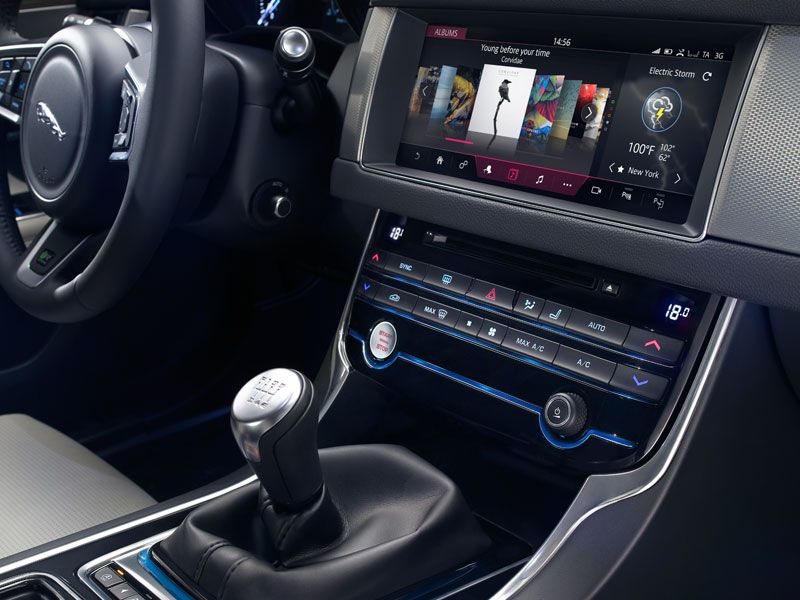Recent Articles
Popular Makes
Body Types
10 Cars with Innovative Navigation Systems
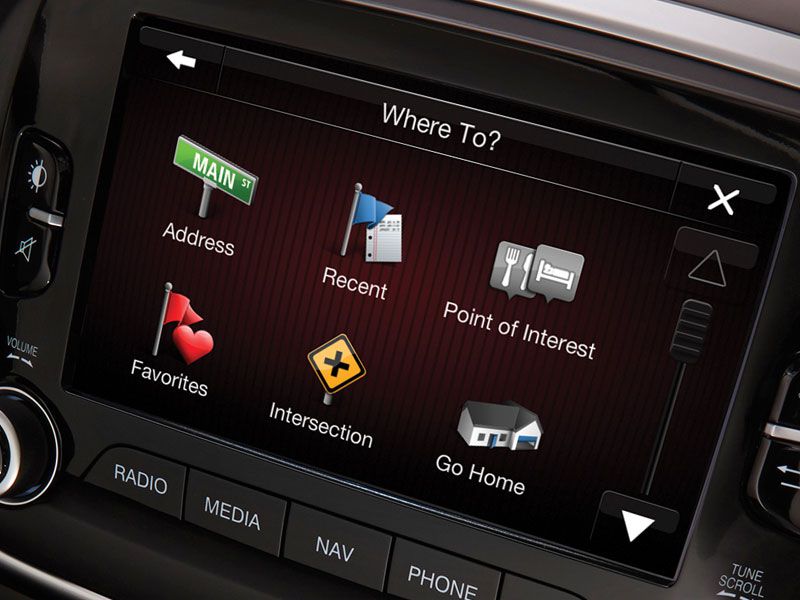
Fiat 500 navigation
If you need assistance finding cars with navigation systems, you’ve come to the right place. Autobytel experts have a robust selection for your review, with entries from across the pricing spectrum. Further, since there are so many vehicles that now offer nav resources, we’ve showcased an especially shopper-friendly focus that highlights what’s new and innovative in the field. Let’s take a look:
2016 Fiat 500
With the 2013 model winning the City Car segment in this year’s J.D. Power Vehicle Dependability Study—which analyzes vehicles after three years of ownership—the 2016 FIAT 500 brings a perhaps unexpected advantage for customers. But it also provides the kind of benefits you do expect, too, like a newly available Uconnect 5.0 infotainment system. Premium audio, Bluetooth, integrated voice-control and more are all in the mix with this setup and navigation, naturally, is available as well. In fact, the 500 is one of the least expensive cars with navigation systems on the road today, since it can be so equipped for less than $20,000—and that cost includes both automatic air conditioning and a “Beats by Dr. Dre” sound system that’s backed by 368 watts of power, an 8-inch dual-voice coil subwoofer, and BeatsAudio digital sound processing.
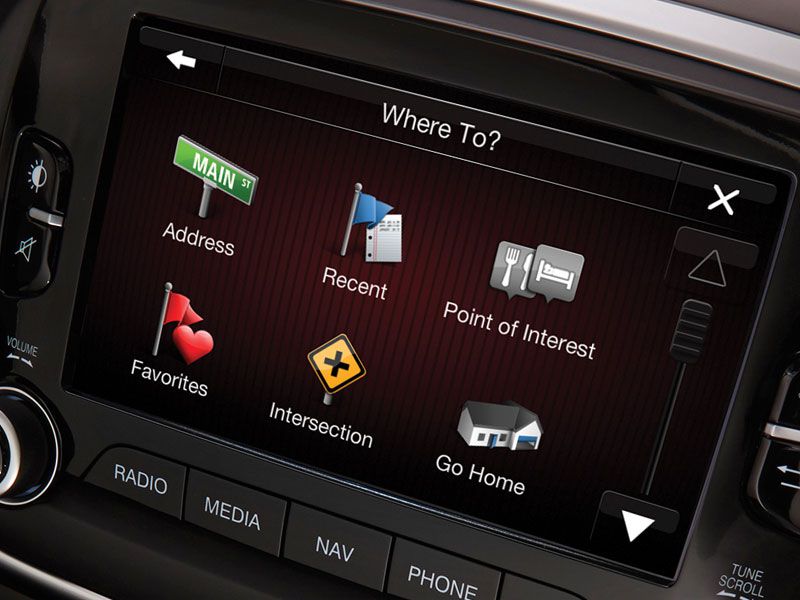
2016 Nissan Versa Note
There is an increasing number of subcompact cars with navigation, as automakers have begun offering high-tech driving resources in a wider range of small vehicles—like the 2016 Nissan Versa Note. A five-door hatchback that complements the low-cost Versa sedan, the Versa Note also delivers plenty of value of its own, especially now that Nissan has reconfigured the popular SV trim. Though it’s priced from just $16,380, the Versa Note SV adds a standard NissanConnect system that comes complete with mobile-apps access, Bluetooth streaming audio, hands-free text-messaging assistance and a five-inch screen that also works for the car’s standard rearview camera. Nissan’s nav capability comes on board in the SL edition, with an MSRP of $18,710, but at that level, owners further enjoy heated front seats, a 360-degree “Around View” monitor, the Nissan Intelligent Key with push-button ignition and other premium cues.
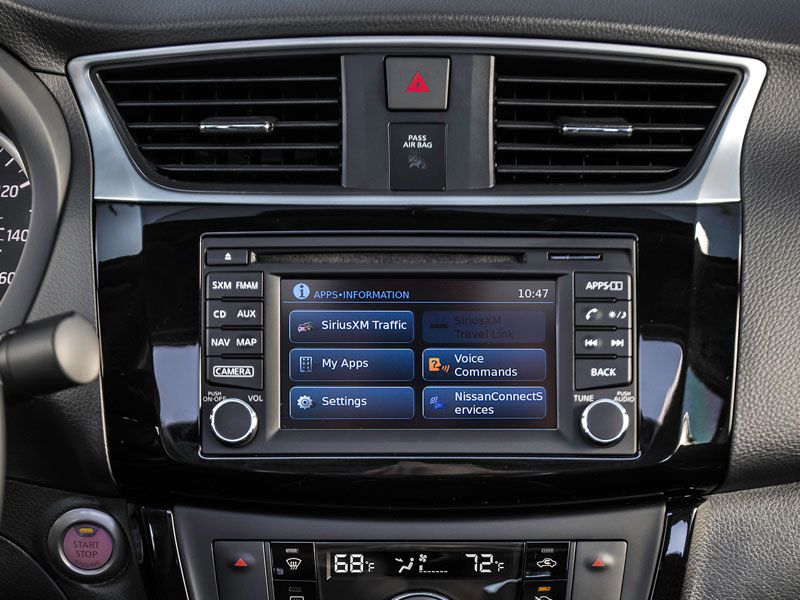
2017 Hyundai Elantra
Our choice among compact cars with navigation systems is one that’s gotten an early jump on the competition: the 2017 Hyundai Elantra. The all-new entry debuted earlier this year with a base sticker price of $17,150 and a stellar array of fresh technologies, although shoppers will have to pay a bit more for the convenience of navigation. More specifically, that requires the Tech package in the Elantra Limited, for an MSRP of $24,850. That’s still highly affordable, of course, and it’s worth noting that that price covers the automaker’s next-gen nav tech, highlighted by an 8-inch touchscreen and Android Auto/Apple CarPlay smartphone integration. There’s also a standard audio upgrade included in that bundle, bringing an Infinity premium sound system with 8 speakers, a subwoofer, along with heated rear seats; heated fronts are standard in all Elantra Limiteds—as are lux cues like a hands-free “smart” trunk.
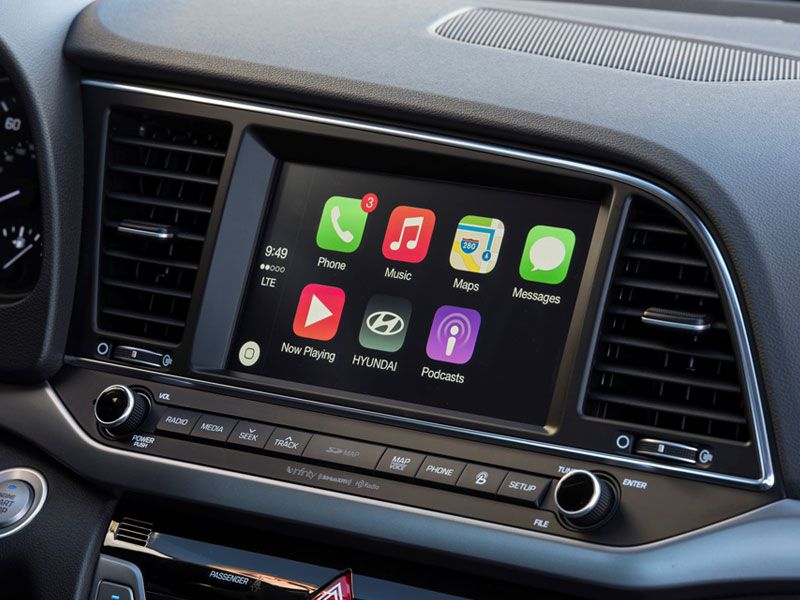
2016 Honda Accord
The 2016 Honda Accord takes a different approach to the matter than most cars with navigation systems: As part of the mid-size sedan’s mid-cycle refreshing, engineers deployed a new dual-screen infotainment setup that combines a lower 7-inch touchscreen with an upper 7.7-inch “intelligent Multi-Information Display,” or i-MID, with turn-by-turn nav directions provided on the top screen and the bottom one used to help control the system. Because the Accord’s new-for-2016 technologies include Android Auto/Apple CarPlay smartphone integration, owners can incorporate Google or Apple Maps navigation capability right into the infotainment system as well. Nor were those the only new technologies introduced for the Accord, which welcomes a full suite of Honda Sensing safety measures, along with a standard multi-angle rearview camera. Indeed, in recognition of the car’s high level of occupant protection, it’s earned a Top Safety Pick+ award from the IIHS and a 5-Star Overall Safety Score from NHTSA.
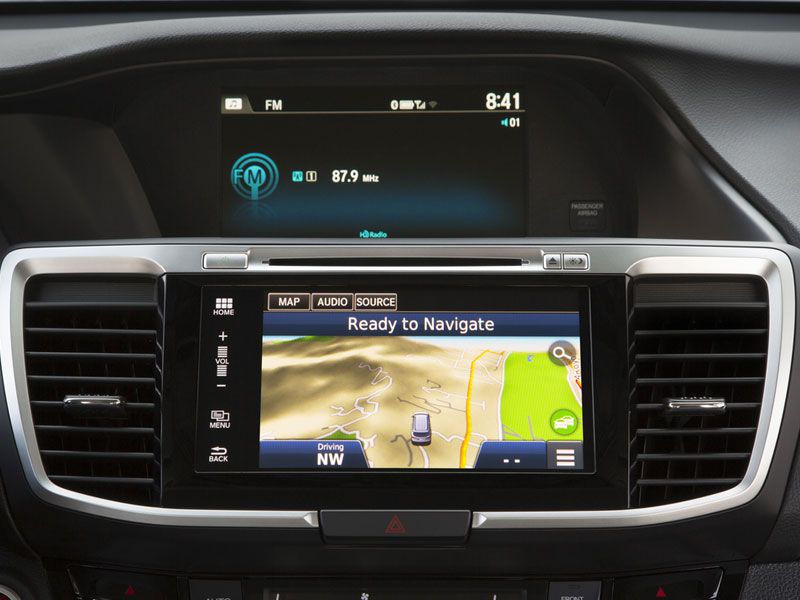
2016 Ford Taurus
Cars with navigation systems require regular tech updates to stay competitive, and the 2016 Ford Taurus shows how the Blue Oval, for one, works to remain at the head of the pack. As a result, Ford’s full-size sedan does feature next-gen Sync 3 technology, for cutting-edge current capabilities that have been noticeably upgraded over the previous Sync setup. For example, the Sync 3 operating system is faster than ever before, while a more responsive touchscreen, enhanced voice recognition and simplified destination entry each specifically improve the navigation experience—as do 3D mapping and complimentary five-year subscriptions to SiriusXM Traffic and SiriusXM Travel Link, both of which come with the Taurus’ available nav system. But then, because Blue Oval engineers already are on the job bettering today’s technology, Sync 3 was designed to automatically update itself, too, through an owner’s Wi-Fi connection.

2016 Chevrolet Camaro
Cars with navigation systems can allow drivers to explore the back roads with a little more confidence, but so can the right choice of car. As a case in point, the new, lighter-weight 2016 Chevrolet Camaro has the eager-to-please powertrains and superior suspension setups needed to tackle the twistiest road trips in the country. The current Camaro SS actually is the most powerful retail model to ever wear that name, thanks in no small part to a big-time 6.2-liter V8 that can supply 455 horsepower and the same number of lb.-ft. of torque. From the handling department, Chevy engineers also offer Magnetic Ride Control for the first time on a Camaro SS, and remember, Brembo brakes are available for all models—and standard on the SS. Available nav capability, and much more, is supplied by the Bowtie brand’s MyLink infotainment system with 7- and 8-inch touchscreens.
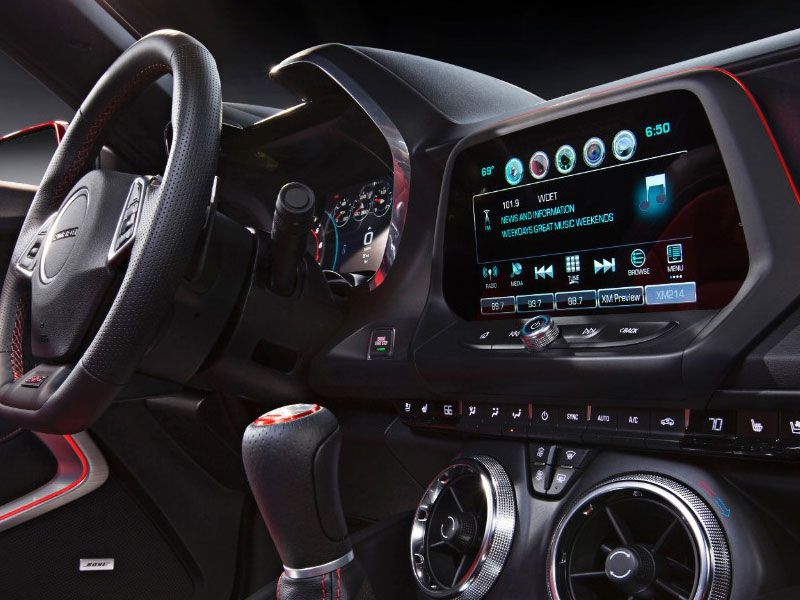
2016 Cadillac CTS
The 2016 Cadillac CTS has somewhat of an advantage here because it can leverage the brand’s impressive technology innovations to furnish more nav resources than many other cars with navigation systems. First off, OnStar Guidance is good for turn-by-turn navigation instructions from GM’s “advisor-based safety and security” package, among other services, as part of a standard one-year subscription. However, OnStar’s mobile Wi-Fi hotspot with 4G LTE connectivity is standard as well, allowing for online-based navigation. Which gets even easier with Android Auto/Apple CarPlay smartphone integration—bolstered by wireless phone charging—for the car’s CUE infotainment system with an 8-inch, fully capacitive touchscreen. Finally, Cadillac can serve up an integrated navigation system for CUE, supported by advanced voice recognition. An additional bonus: That full-color LCD screen doubles as a power-operated cover for a hidden in-dash storage bin with a capacity of 1.8 liters.
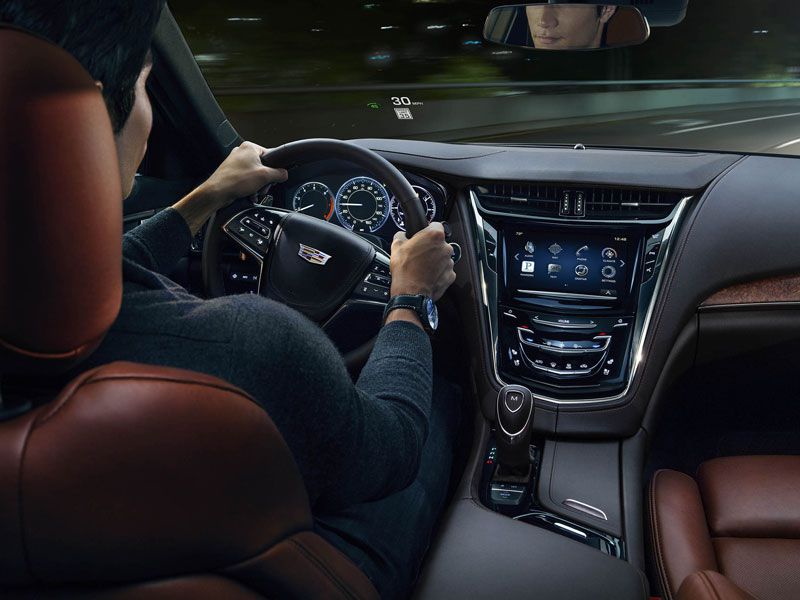
2017 Audi R8
As you might expect from the winner of this year’s World Performance Car award, the all-new 2017 Audi R8 is a high-tech high performer that sets new benchmarks for power and capability. Thus, the range-topping R8 relies on a mid-mounted V10 engine with 610 horsepower and 413 lb.-ft. of torque, with that output able to catapult the car from 0-60 in 3.2 seconds; the top speed for the next-gen R8: an electronically limited 205 mph. In keeping with the R8’s premium positioning, the four-rings brand also debuts a nav feature for the R8 that elevates it into the upper echelon of cars with navigation systems. It’s Audi’s “MMI navigation plus” setup with handwriting-recognition functionality so owners can enter destinations by “writing” them on the touchpad, instead of having to key them in letter-by-letter, as with R8 rivals.
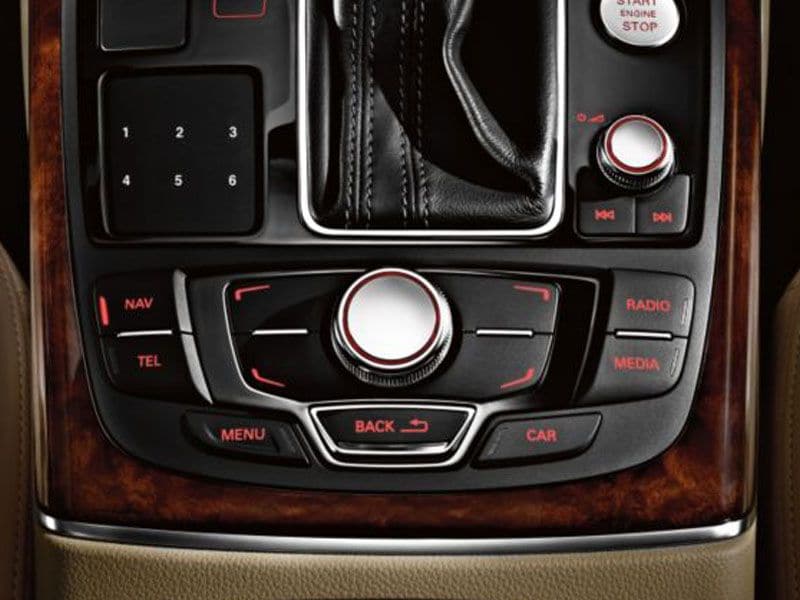
2016 Infiniti Q50
Autobytel experts believe that to get the most out of cars with navigation systems, those entries also should be fun to pilot. And apparently, the engineers at Infiniti think the same way. They’ve cooked up a trio of new engines for the 2016 Infiniti Q50 sport sedan, each one tuned for a different driving experience. Particularly interesting is the entry unit: The 2.0-liter turbo unit comes from Mercedes’ plant in Tennessee, along with 208 horsepower and 258 lb.-ft. of torque, through a recent partnership between M-B and Infiniti. The latter brand then brought out two versions of a new homegrown high-performance powerplant. Both are 3.0-liter, twin-turbo V6s, with one calibrated for 300 horsepower and 295 lb.-ft. of torque and the other rated at 400 horses with 350 lb.-ft. of torque. Also nice from a nav perspective is the car’s available navigation-synchronized adaptive shifting.
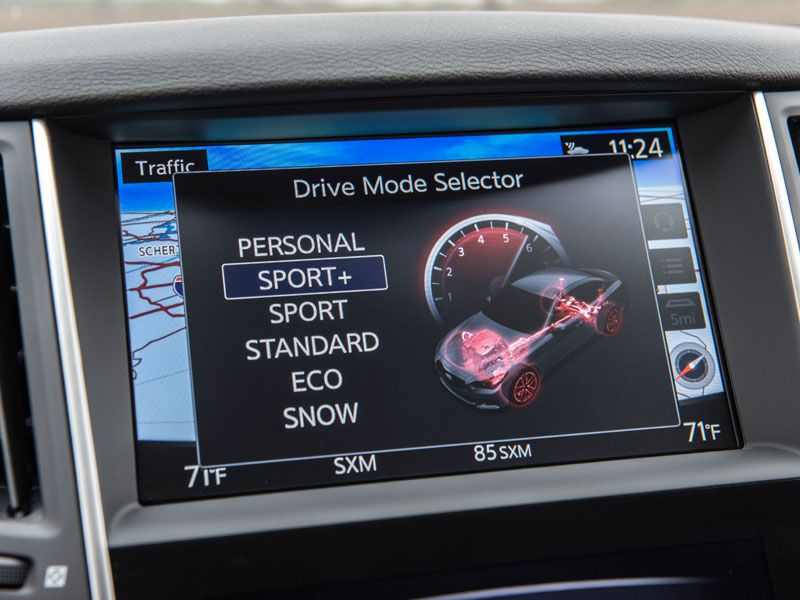
2016 Jaguar XF
Even the most expensive, technologically advanced cars with navigation systems can be in danger of losing their way if they lose contact with the GPS providers. Unless said car boasts an InControl Touch Pro infotainment system like the 2016 Jaguar XF. With that setup, and technology that analyzes vehicle data some 40 times a second, drivers can rely on “dead-reckoning functionality” for times when GPS service is unavailable. Extra InControl innovations for navigation include a Commute Mode, capable of “learning” a daily driving routine and then using that information, along with real-time traffic data, to automatically suggest alternate routes based on current conditions. Meanwhile, the highly helpful Approach Mode can show an interactive, 360-degree view of the nav destination, displaying it on the XF’s 10.2-inch touchscreen when the vehicle is about 650 feet from its arrival point.
